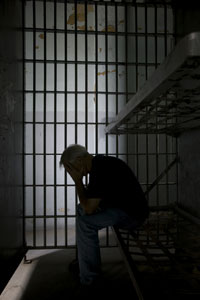Let’s imagine…
You are locked inside a room the size of your bathroom for 23 hours a day and let outside for one hour, but only when it’s warm and only in a cage the size of a walk-in closet. Your meals are eaten inside this room, and there is limited reading and television access.
This is solitary confinement in Ohio.
Persons With Mental Illness in Solitary
Now imagine you have a mental illness. Make no mistake, you can still be subjected to solitary confinement.
Too few community mental health resources make it likely that people with a mental illness will find their way to prison where there are even fewer resources. About 80 percent of those incarcerated in Ohio’s prisons have a documented history of alcohol and/or drug abuse.
We also know that 19 percent of Ohio’s prison population is on the mental health caseload, yet mental health expenditures only account for half of one percent of the budget.
More than 450 people with a mental illness are in two of Ohio’s most restrictive prisons.
Solitary Watch reports, “
Persons with mental illness often “have difficulty complying with strict prison rules, particularly when there is scant assistance to help them manage their disorders…”
In 2007,
a federal judge ruled that putting prisoners with mental illness in
solitary confinement is “the mental equivalent of putting an asthmatic in a place with little air to breathe.”
Ohio Prisons Are Doing It
Ohio routinely places individuals with mental illness in two of the most restrictive prisons in Ohio with little access to treatment and resources to aid rehabilitation.
Learn more about
ACLU of Ohio’s campaign to end solitary confinement in Ohio’s prisons.

